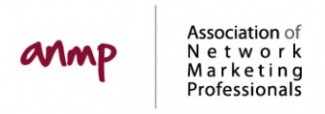By Len Clements © 2004
Every type of compensation plan, be it binary, matrix, unilevel, breakaway, Australian or Venusian, has it’s advantages and disadvantages. Each provides it’s own unique income generating benefits, and each has it’s own unique challenges. There is no perfect compensation plan. The binary plan is no exception. Having said that, one of the challenges specific to the binary is NOT it’s legality, in spite of the rampant rumors and prognostications that pervade the industry (mostly via internet message boards – now there’s a reliable source of information!).
Personally, I have no great affinity towards the binary plan itself. However, I loathe the mudslinging competitor who unjustly maligns the plan with claims of imminent regulatory action, even going so far as to suggest a pending federal action to outlaw the plan all together. Yet another example of the rise in scare-tactic recruiting that has been increasing since the early-90’s.
The argument goes that since so many state and federal attacks on MLM companies the last several years (which, overall, have been few and far between) have been on companies employing a binary-type compensation plan, clearly there must be something legally suspect with this type of plan. After all, look at the hit list: Destiny Telecom, Tele-Sales, Inc., Jewelway, Gold Unlimited, The Tax People, SkyBiz, and the list goes on. The first regulatory attack on a company using a binary plan was on the very first company that ever popularized the binary plan American Gold Eagle. This company was founded by the recognized creator of the plan, David Crowe, who latter (after AGE was closed down) started the aforementioned Gold Unlimited and who was eventually indicted on eleven federal counts, sentenced to prison, fled prosecution, and was featured on the TV program America’s Most Wanted (resulting in his eventual capture). Granted, this doesn’t bode well for the binary. But then, every accused would look guilty if we only heard from the prosecution. Let’s hear from the defense…
In each and every case in which a company using a binary plan suffered a regulatory attack, the legality of the compensation plan was NOT the target. It was what these companies were DOING with the plan that caused their legal grief, and what they were doing is the same thing that EVERY legally scrutinized MLM company in history was doing, regardless of the type of plan they used. That being, they were selling something that had no significant value beyond qualifying in the compensation plan.
In a typical binary plan distributors receive multiple “business centers” with which they may build a downline sales organization below. The more positions you “activate” the greater the potential income. In too many cases, the result was large up front purchases of products not to consume or resell, but rather to acquire multiple positions to build under. The more you buy, the more centers you activated. Therefore, you were essentially being paid for recruiting since only new recruits would make such purchases. Thus, the operation was deemed an illegal pyramid scheme (legal network marketing companies only pay commissions on retailable products that people would buy based on the actual value of the products in other words, they’d have bought them even if there were no income opportunity associated with the purchase). However, such token purchases primarily for income qualification purposes exists with every type of compensation plan. Whether you buy $5,000 worth of widgets to qualify for the Universal Master rank, or $100 worth just to meet your monthly quota, if no one is buying other than reps, and even they are, for the most part, only buying because they have to to get paid, you are equally vulnerable even if your company doesn’t use a binary plan.
State and federal regulators don’t just swoop in and permanently close down such companies. They issue injunctions or restraining orders that temporarily limit or cease operations while the company and the agency, and eventually the courts if either side chooses to take it that far, decide the eventual fate of the operation. Usually the company makes rapid and significant changes to the program in an effort to satisfy the authorities so they may resume business as usual. Historically, with rare exception, MLM companies in this situation will quickly agree to any and all revisions demanded of them, else their national sales organization quickly resembles a Road Runner cartoon a big cloud of dust with the word “POOF” in the middle of it. In fact, every company using a binary plan that was attacked was given this opportunity at some point. In fact, several companies eventually satisfied the attacking agency and were allowed to resume business. And, in fact, when all demanded changes were agreed to and the new, revised program was introduced to the field every single one of these companies STILL HAD A BINARY COMPENSATION PLAN! Clearly, the type of compensation plan they used was not the issue.
In fact, many MLM companies that have been legally attacked, or even shut down, have had perfectly legitimate products of value and a legally sound compensation plan, at least in it’s design. What many distributors today fail to understand is that regulators don’t simply ask “Is there a product or not?” or “Do people get paid for recruiting?” They watch how distributors actually use the products, and how they promote the compensation plan. In other words, they don’t take action based on what the program is designed to do, they take action based on what distributors are actually doing with it. A baseball bat is designed for the safe, innocuous task of hitting a baseball, but it can also be used as a weapon. Same with some MLM programs. They may be fine in their construct, but can cause great harm if abused.
Companies today that employ binary or binary-hybrid plans, such as Usana, Synergy, Longevity Network, Mannatech and Market America, are all considered safe, legal companies and, over a combined history of almost 30 years, have had no legal challenges to their manner of compensation. Yet, the binary aspect of these plans vary little from that used by Jewelway and Gold Unlimited. The difference is that these latter companies either sold products that had no real value to anyone (such as Destiny’s 55 per minute prepaid calling cards), or had quality products which were still only purchased primarily to qualify for a higher paying position in the plan, a la Jewelway. I once knew someone who shamefully confessed they had purchased over $35,000 worth of fine jewelry when they joined Jewelway. No, it wasn’t Mr. T or Deion Sanders. It was simply someone who was convinced by their less reputable (or legally ignorant) upline that it would financially behoove them to occupy 30 positions in the hierarchy. The more reputable companies mentioned above have products that are routinely purchased by folks who have no interest in an “income opportunity,” they just like the products. Furthermore, most of their distributors buy because they actually WANT the products, not just to meet a quota. Another vitally important difference in the design of the compensation system, or more specifically the qualifications, is that in legally sound binary companies there is no facility to purchase massive inventory loads to qualify more positions. Three’s the limit (more positions can be earned, but no additional products need be purchased to qualify them).
Viva la differance!
The legality of a network marketing opportunity has little to do with the design of their compensation structure and everything to do with the motivation for buying their products. History has shown us, over and over, that this applies to companies that use a binary plan as well.











